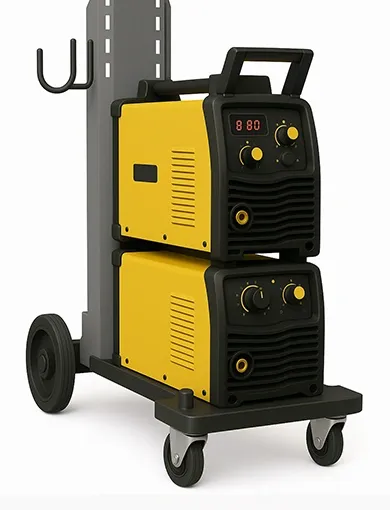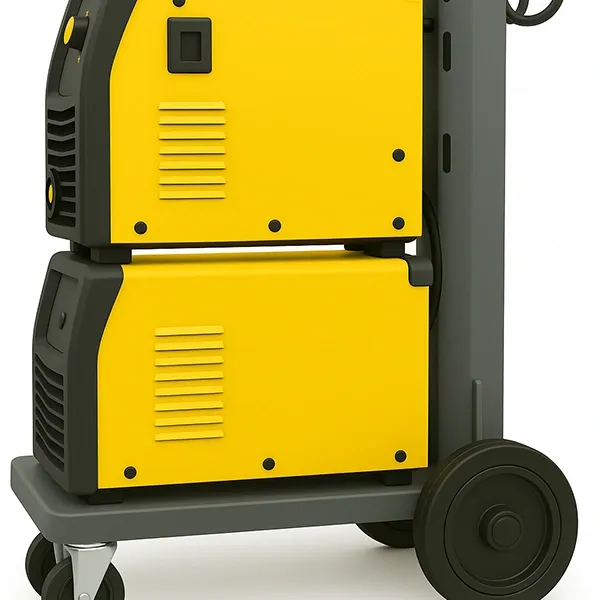TIG Welding Wire Prices
TIG welding wire prices vary depending on the type of wire used, its diameter, and the packaging based on kilograms. Especially alloyed and stainless wires are positioned in higher price ranges due to their high durability. In industrial applications, cost is as important as quality, so these criteria should be evaluated together during selection.
TIG welding wire prices also differ according to the wire’s production standard, brand, and the certification documents it holds. Wires certified with EN ISO provide quality assurance and are positioned in the higher-end price segments. Users looking for cost-effective alternatives may prefer domestically manufactured welding wires. However, in projects where high performance is expected, technical compatibility and long service life should always be prioritized.
What Are TIG Welding Wire Prices?
The TIG welding method is a high-quality welding technique preferred for precision work. TIG welding wires used in this method directly affect the success of the process. Wire thickness, alloy type, and production quality cause price variations. These wires, generally used in industrial applications, provide high performance when combined with appropriate machines.
When determining the wire price, raw material type and production process are taken into consideration. In particular, stainless welding wire offers long-lasting solutions with its corrosion-resistant structure. This raises the price level compared to standard carbon steel. Also, sales based on kilograms allow businesses to plan costs on a scalable basis.
While conducting price research, compatibility with the TIG welding machine used should also be considered. Machines that ensure a stable arc at low current are preferred with thinner wires. For high-quality welding, the correct combination must be established. This way, both cost is controlled and job safety is ensured.
Factors that directly affect welding wire prices include:
- The type of alloy used in the wire
• Wire diameter and packaging style
• Brand and country of origin
• Certification and quality standards
Welding wires are used in all areas of industrial production and are available in the market with various types tailored to different needs. Welding wire, used in both manual and automatic machines, should offer a balance between price and quality for efficient applications. Therefore, in addition to proper product selection, price comparison should also be made carefully.
Key Considerations in TIG Welding Wire Selection
To achieve high-quality results in TIG welding operations, not only proper technique but also the right consumable selection is essential. Especially the choice of welding wire plays a decisive role in efficiency, safety, and durability of the process.
The fundamental criteria to consider when selecting the right TIG welding wire are as follows:
Material compatibility is one of the most critical criteria for accurate welding results. The chemical and physical properties of the base material and welding wire must match. Especially technical features such as melting point and electrical conductivity should be considered.
Melting balance refers to the controlled and even melting of the wire during welding. The flow capability of the wire directly affects results, particularly in positional welds. A stable melting behavior is expected in horizontal, vertical, or overhead positions.
Surface cleanliness is an important factor that determines the difficulty level of post-welding operations. Slag accumulation and oxidation increase the need for grinding or polishing. High-quality wires create clean weld seams and reduce labor costs.

- Usage type should be evaluated depending on whether the operation is manual or automatic. In manual applications, more flexible and user-friendly wires are preferred, while in automatic systems, wires with fixed diameter and consistent feeding capability stand out.Ease of supply plays a critical role in industrial productions requiring continuity. The ability to procure wire of a specific quality and diameter from the local market or in a short time provides a significant advantage. Otherwise, project delays or quality deviations due to wire changes may occur.
Choosing TIG welding wires according to the right criteria increases welding quality and ensures production safety in the long term.
For the most suitable TIG welding wires for your project, contact Eko Kaynak today.

